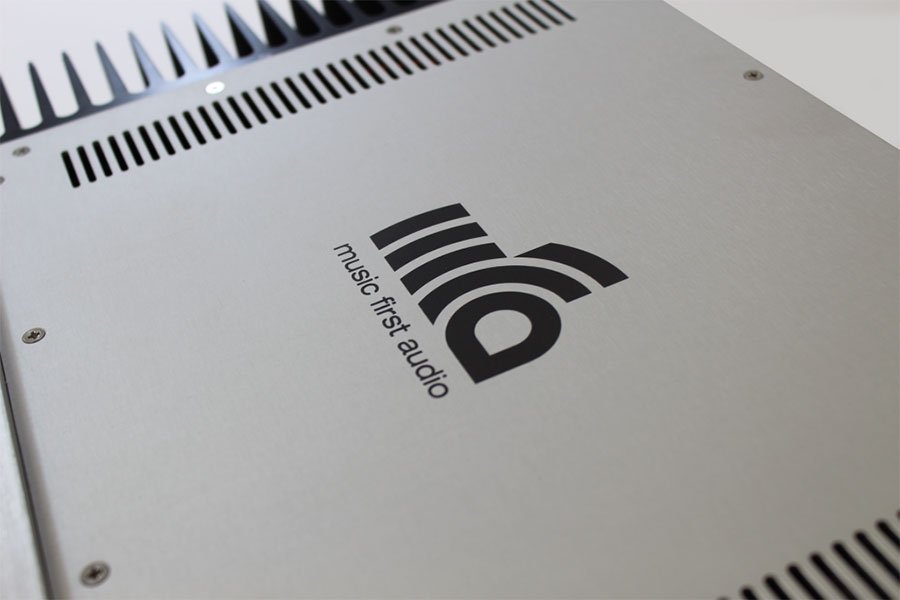![]() Music First Audio got in touch to tell us about their new monoblock amplifiers, Jonathan Billington told us: ‘The Senlac SJE monoblocks are the result of several years of investigation into what makes a good audio amplifier. This core concept, we call “complex simplicity”‘.
Music First Audio got in touch to tell us about their new monoblock amplifiers, Jonathan Billington told us: ‘The Senlac SJE monoblocks are the result of several years of investigation into what makes a good audio amplifier. This core concept, we call “complex simplicity”‘.
The name comes from Senlac after the hill just outside Hastings that William of Normandy marched to before the Battle of Hastings. This hill is only a couple of miles from the Music First Audio workshop. SJE after a good friend of Music First Audio who passed away in June 2017, Stewart James Emmings.
The amplifier is Class AB 100W SLN. It is a 100W into 8 ohms class AB Mosfet power amplifier. Part of the product aim was to continue with the extremely low noise performance of the Music First Audio Transformer Pre-Amplifiers. SLN = Super low noise.
The Product is now in full production and is available with silver, black or blue front panels.
Jonathan told us more about the technical details: ‘It’s an obvious idea, look at each part of the circuit and decide what job its doing, first, if its doing more than one thing, that’s probably a mistake, asking one part to do more than one thing is never going to be optimal, that idea leads to increasing complexity. Then examining the new complex circuit and ask if what it is doing is being done in the simplest way. It may seem that those two ideas will compete or even cancel, but with experience, they don’t, they combine to allow better solutions through better understanding of the problem’.
‘The most obvious example of this strategy is the output stage. The traditional solution to a 100W output stage is to use multiple small power devices in parallel. But that is adding complexity. We reduce the complexity by using one single pair of large output devices. The devices we use are not the ones you will traditional find in an audio amplifier, so this simplicity adds a problem. We have to rethink the way we drive the output stage. Simplicity in one area leads to complexity in another. But repeat the process, rethink the driver stage, what job is it doing? Optimise how it does that and then that in turn becomes simpler. Repeat this process a number of times and simplicity returns, but without any loss of performance, in fact the new circuit performs better because it doesn’t have the problems inherent in the traditional circuit’.
‘Another example is the simple current source. Modern amplifiers are full of current sources, and the Music First Audio Senlac SJE is no different. But looking at what a current source is asked to do, shows an additional layer of complexity. It’s expected to provide constant current as we may expect, but unspoken in this is a second part. It’s expected to provide constant current, while the voltage across it changes. This again is obvious, but shows that its being asked to do two things. So, we make it just do one job, provide constant current, and add a buffer to do the second part, the only job the buffer has is to hide the changing voltage from the current source. Each part only does one thing. You may ask, what is the benefit of this additional complexity? Well, it’s simple, it removes two problems that affect most solid-state circuits, the first is the early effect, where the voltage across a transistor alters its gain. The current source uses gain to maintain the current, but because the voltage is constant, we don’t see the effect. The buffer is not providing gain, it is just a buffer, so even if the voltage across it varies, it doesn’t matter. The second is known as memory distortion or thermally induced distortion, it causes the smearing of a signal as it passes through the circuit because the temperature of a device alters its characteristics, and the temperature will vary as the signal passes through, but as the temperature will react slowly, a large signal will affect the following smaller ones. Temperature change is caused by power changes, power is voltage multiplied by current. If the voltage across the current source remains constant, and its current will of course, there is no change in power, so no change in temperature, so no memory effect. Added complexity has provided a better and simpler solution’.
Product concept: – Jonathan Billington and Nick Gorham
Product design: – Nick Gorham.











































































































































































































You must be logged in to leave a reply.